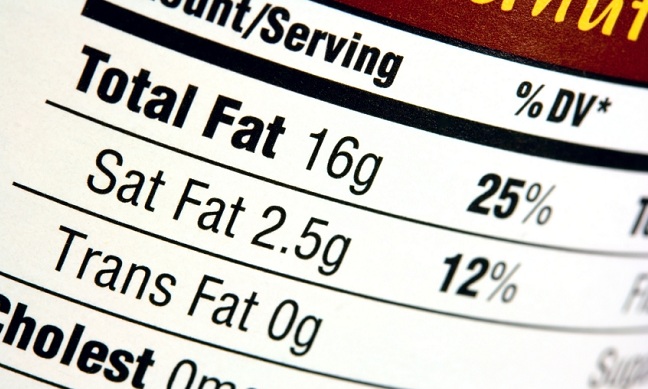
Remember when you first seriously decided to improve your health and physique? You probably went right to your pantry to toss out all the crap and start buying healthy foods.
Unfortunately, the food companies have some deceptive practices they use to fool new health seekers into thinking they’re eating right for their “easy diets“.
This means that it’s not enough to just plan on eating healthy. You have to learn the lingo of when something is healthy vs. “pretend-healthy.” Here are some guidelines to help you know when a label means something other than what you’d expect.
3 Food Labels Most Likely to Fool New Dieters
#1 “All Natural”
This is one of my favorites, because it can mean just about anything.
Here’s some food for thought:
If you’re a food manufacturer… can you pump your chickens and pigs with hormones and call the meat “all natural”? Yes.
Can you take laboratory additives and put them in your “all natural” juice product? Sure!
Can you feed your cows with factory junk that animals would never eat in the wild? Absolutely! Why not?
Since standards are this loose for the “All Natural” label, what can you actually assume about a product with that sticker?
Well, you’re probably not going to find a hunk of plastic or metal in your steak, but that’s about it. “All natural” is your assurance that your food is edible and not a plastic hamburger pulled out of Toys R Us.
If you care about how natural your food is, look at the ingredients and see if the product is held to any specific standards, such as “organic,” “grass-fed,” or “hormone/pesticide – free.” Many people just wish they had diets that work, instead they are just confused and fooled.
#2 “Per Serving”

It’s a glorious day in America when you can feed a family of 17 with a single bag of potato chips.
You might have an idea of where I’m going with this…
At some point, food companies figured out that sometimes it’s impossible to improve a food’s nutritional profile without destroying taste or raising production costs.
Their solution was: “When designing the label, pretend they’re not that hungry.”
This is why you can pick up a small bottle of soda that says it has 2 to 3 servings… or as mentioned earlier, a bag of potato chips that assumes you only want to have five chips at a time. Frito-Lay must really admire your discipline.
Luckily, there are a couple things that are forcing companies to at least consider using realistic serving sizes. For one, when you shrink the serving, vitamin content goes down along with everything else. More than that, the modern health movements have all championed protein, and companies really don’t want to give up the “health points” for protein content and muscle building.
You’ll just have to do the math when you look at the back of the label and be realistic on how much you plan on eating.
#3 “Zero Trans Fats”

If you’ve been in the health scene for any time at all, you know that all fats are not created equal.
Now what kind of fat is good for you is not always so clear. Between monounsaturated fats, polyunsaturated fats, saturated fats, Omega-3’s and Omega 6’s, it’s not always easy to know which is the “favorite of the month” for nutritionists.
In fact… for the past twenty years, we’ve had a pretty bipolar relationship with fats and carbohydrates in general. As much as we “know” right now that natural fats are good for you and white bread carbs are bad, we really have no idea if nutritionists are going to say the opposite two decades from now
But the one thing that’s been consistent since the dawn of time is that trans fats are NOT something you want in your body.
These are artificial fats that serve pretty much to keep food lasting longer and at variable temperatures. The most common of the bunch is partially hydrogenated oil.
Since they’re not safe in any quantities, the law commands that companies reveal the amount on the label.
Unfortunately, when the law was put into effect, it allowed for smaller amounts of trans fats in products to still count as “zero grams.” The FDA figured that less than half a gram was the same thing as no grams. (Still waiting for an answer from my Algebra teacher on that one.)
This gets even worse when you consider that they’re really saying zero grams “per serving,” and when you divide that cake mix into enough micro-slices, you could throw in a whole pound of partially hydrogenated lard while still being compliant with the FDA.
So whenever you see a label saying “Zero grams trans fats” you can read that as “ABSOLUTELY GUARANTEED to have Trans Fats!” because if there were none at all, they would say “No Trans Fats,” which is the legal way of saying “Zero trans fats and we’re not bullshitting you this time.”
Always check to make sure there are no partially hydrogenated oils and you should be fine.
In the end, you have to be responsible and read the ingredients on just about everything. Even if something says “No additives,” check the ingredients to see if there are additives. The food company may be using a loophole in labeling laws, or it might be outright breaking labeling laws.
While you could simply ignore all stickers on the package when shopping, I would use them as clues instead of dismissing them outright. See labels like “No added sugar,” “no preservatives” and “100% fruit” as just possibilities worth taking a closer look at. You generally only need to do this a few times anyway as you settle into a new workout diet plan.
-Terry Asher
Terry
Latest posts by Terry (see all)
- How Important Are Net Carbs For Building Huge Muscle? - Apr 28, 2017
- The Matt Damon Workout Explained - Apr 27, 2017
- Watercress – Benefits And The Best Way To Consume It - Apr 26, 2017










